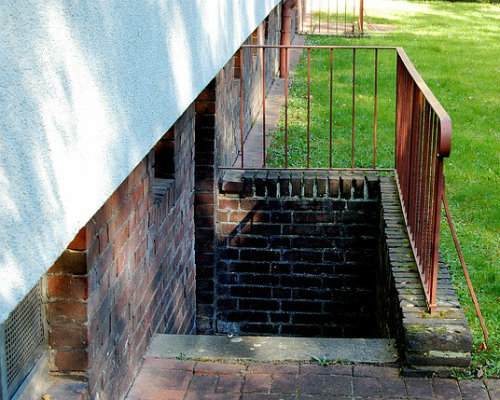
Living in the Midwest can mean unpredictable weather. This can mean 75 and sunny one day and torrential downpours the next.
While this is nothing new for many of us, it is something that can take a toll on our homes — specifically the basement.
When it comes to spring cleaning many people imagine organizing closets, dusting, and maybe even getting behind the fridge and kitchen range. However, an important aspect of spring cleaning starts at the bottom of your home: in the basement.
If your home has a basement, you’ll want to keep an eye on it throughout the spring and early summer to avoid water intrusion and eventual mold problems.
How Is the Water Getting in There?
To get started, you must try to detect how the water is getting into your basement in the first place.
Typically it’s due to rain or poor placement/mapping of your downpipes outside of the house. If you don’t have any troughs or downspouts to lead the water away from your house, it can easily leak into your foundation.
Once you know how the water got in your home, you can make the best game plan to keep it out and have a mold-free basement!
Maintaining a Dry (and Mold Free) Basement
Check your gutters
Review all of the gutters and ensure the rainwater enters them and flows through the downpipes — if they overflow you may need to change them for deeper ones.
Direct the water
Your gutters give you control over the water, now you must lead them away from your home and foundation.
Rows of concrete leaders from the downpipes to the bottom of the slope of your home can help. Of course, this step is for those lucky homeowners who have a natural slope on their land.
Underground sewer
If you don’t have the natural run-off on your land, installing an underground sewer and connecting the downpipes directly to that can be a huge help.
Watch for surrounding properties
Look at the houses around your own: you should be mindful of their positioning.
If they are higher than your home, their runoff and excess water could potentially land in your yard — causing you problems. If this is the case, building a ditch is a simple solution.
Other Proactive Tips
If you’ve followed the above steps, but still suffered a flooded basement or just want some good general maintenance knowledge stick with us:
- Waterproof your basement – this is a great preventative step and can go a long way. This includes dusting, installing a drain, and fixing the floors.
- Use water resistant paint
- Utilize a dehumidifier to absorb excess moisture. Depending on the size of your basement, you may even benefit from using multiple dehumidifiers.
- Surround your basement with rocks or gravel as they both dry quickly and do a great job of absorbing water
- Avoid hanging wet clothes in your basement if at all possible so as to not contribute to the humidity
Do you run into problems with your basement in the spring? Leave a comment and let us know what you’ve done to solve these issues.
We’re Here to Help!
If you have any other home concerns don’t hesitate to get in touch with one of our experienced home inspectors!
Request an Inspection Online
This is the best way to start the process, ensuring a text, email, or voicemail doesn’t get lost in today’s digital traffic. For more complex projects, feel free to contact us and we will respond quickly regarding your needs.
Request An InspectionYou Can Trust Us
Having an unbiased expert in your corner is an incredibly valuable asset.
Learn Why